Written for the course Principles of Public Law administered by Prof. Silvia Nicodemo of the University of Bologna, Italy.
Abstract
This paper tries to explain the relationship between public and private law and offer a new approach in conceptualizing the abstract political situations of voluntaryism/voluntarism and totalitarianism. It offers a set of economic and political data to support the claim that the relationship between totalitarianism and voluntaryism and that of public and private law can be explained in a single dimensional linear model. Further, it compares different major legal systems from all around the globe from a personal liberty aspect and Western perspective.
Keywords: public law, private law, totalitarianism, voluntaryism, voluntarism, economic freedom, social liberty, legal systems, common law, civil law, secularism, theocracy
Public Law and Private Law
Public Law
A Dictionary of Law, published by the Oxford University Press defines public law as “the part of the law that deals with the constitution and functions of the organs of central and local government, the relationship between individuals and the state, and relationships between individuals that are of direct concern to the state.” (Law, 2015). Therefore, it is plausible to say that public law is the social framework which finds its source in government regulations. It is, by definition, a top-down imposed scheme.
Private Law
The same resource above defines private law as “the part of the law that deals with such aspects of relationships between individuals that are of no direct concern to the state. It includes the law of property and of trusts, family law, the law of contract, mercantile law, and the law of tort.” (Law, 2015). Henceforth, private law is, historically, the structure of social norms that govern people’s lives. It has its source directly in self-governing principles that have come to existence through the struggles and disputes that happened in a given society.
Public v. Private Law
Even though a somewhat clear contrast as to what the fields of public and private law each encompass exists, it was not the case before. For example, in early twentieth century, A. V. Dicey claims that the distinction between legislative and pre-existing law (referring to the common law tradition which this paper argues to be closer to private law) was not around (Dicey, 1917). The division between the two and the supremacy of public law over the private, as argued by Hans-Hermann Hoppe, is indeed a very contemporary one (Hoppe, 2018).
Also, it is sensible to define legal terms, as is done with private law above, without a government or state monopoly. This is so as it was the case during the Middle Ages (“The Common Law and Civil Law Traditions,” 2017).
Totalitarianism and Voluntaryism
Totalitarianism
A Dictionary of Contemporary World History, by the OUP, briefly states that totalitarianism is “A term often used as an antonym to pluralism to describe a state in which politics, society, and economy are all subject to the control of an elite or a party” (Riches, 2021).
However, this definition misses the spirit of the system itself. Theoretically, the great majority of the people can give total power to their representatives under a pluralist democracy in regulating their and the others’ lives. Thus, the definition by the Encyclopaedia Britannica, “a form of government that attempts to assert total control over the lives of its citizens.” is more suitable (“totalitarianism,” 2022).
Voluntaryism/Voluntarism
Contrary to totalitarianism, which was first observed and then defined by social scientists, voluntaryism/voluntarism was structured before an intellectual ideal. Thence, different thinkers of different fields defined voluntarism separately in separate contexts. Two of those contexts that are linked to the notion this paper discusses are political economy and sociology.
On the political economy side, Auberon Herbert, the thinker who coined the term voluntaryism, defines it by claiming that “Under voluntaryism the state employs force only to repel force—to protect the person and the property of the individual against force and fraud; under voluntaryism the state would defend the rights of liberty, never aggress upon them.” (Herbert, 1885). And on the sociology side, Talcott Parsons, who formulated the theory of voluntaristic action named it such because “choices are voluntary rather than coerced or predetermined.” (Dillon, 2010).
Hence, it is sensible to define voluntaryism/voluntarism as a system where every non-coercive decision is made voluntarily by individual actors.
Totalitarianism vs. Voluntaryism/Voluntarism
Were each regime be defined in a way that they contrast as much as possible, totalitarianism would be defined as a system where the relationships in a given society are all governed by the state, and voluntaryism/voluntarism as a system where all relationships are governed by those who take part in them. From there, it is possible to draw parallels with the distinction regarding public and private law. While public law encompasses the relationships governed by the state, private law does the other side. In that sense, assuming that every action in a society can be attributed either to a public or private legal scheme apart from state monopoly on dispute resolution, totalitarianism is the regime where law is totally public and voluntaryism/voluntarism is the one where it is totally private.
Correlative Data
Economic Indexes
This paper has utilised two indexes of economic freedom. One of them is Economic Freedom of the World Annual Report (2022) published by Fraser. This ranking is base 10. The other is the Index of Economic Freedom (2022) published by the Heritage Foundation. This one is base 100. Both indexes are publicly available online and highly referenced in their respective domains. For both indexes, a higher score indicates a freer political system.
Social Indexes
Like their economic counterparts, there will be two indexes cited in this paper. One is the Human Freedom Index (2022), copublished by the Cato Institute and the Fraser Institute. This ranking is base 10 and a higher score indicates a freer political system. The other is the State of World Liberty Index (2022) published by J. Patrick Rhamey, Jr. of Virginia Military Institute. No scoring is available for this index, hence the ordinal ranking is used. A higher ranker is an indication of a freer society. They are publicly available online and highly referenced works.
Indexical Correlations
Under this study is arranged four correlation charts and their respective data. Each graph is a result of one economic and one social index written above. A separate digital file consisting of the correlations and other statistics is available with the paper, alongside the original indexes utilised.
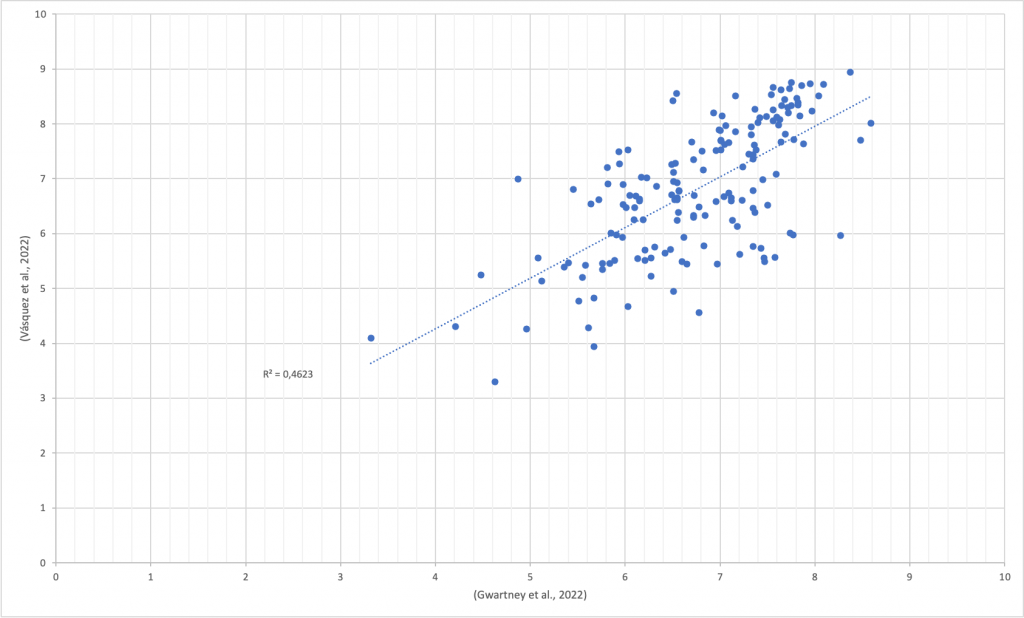
Graph 1. The correlation between Economic Freedom of the World Annual Report (2022) and Human Freedom Index (2022)
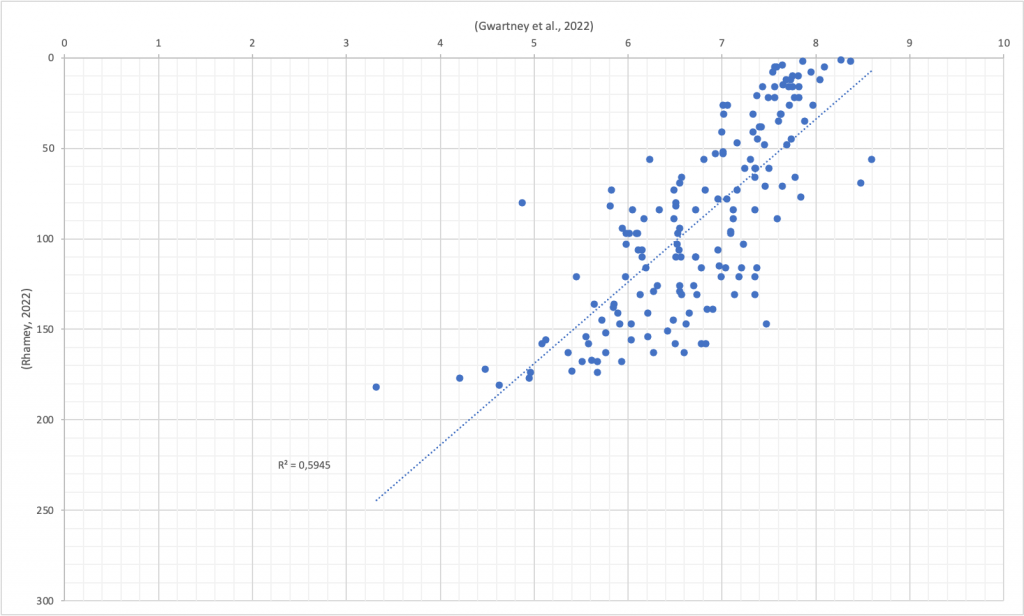
Graph 2. The correlation between Economic Freedom of the World Annual Report (2022) and State of World Liberty Index (2022)
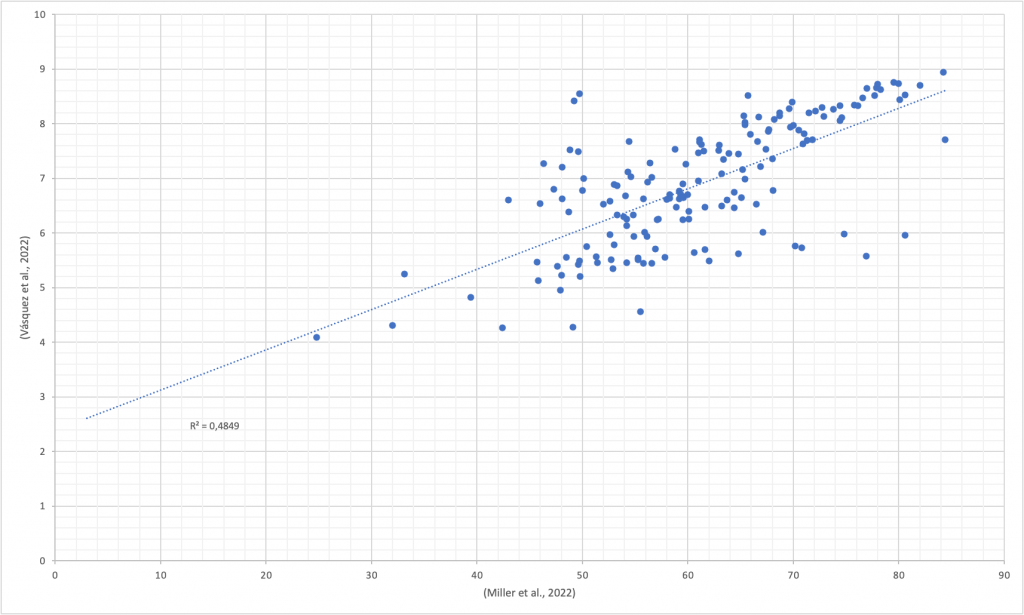
Graph 3. The correlation between Index of Economic Freedom (2022) and Human Freedom Index (2022)
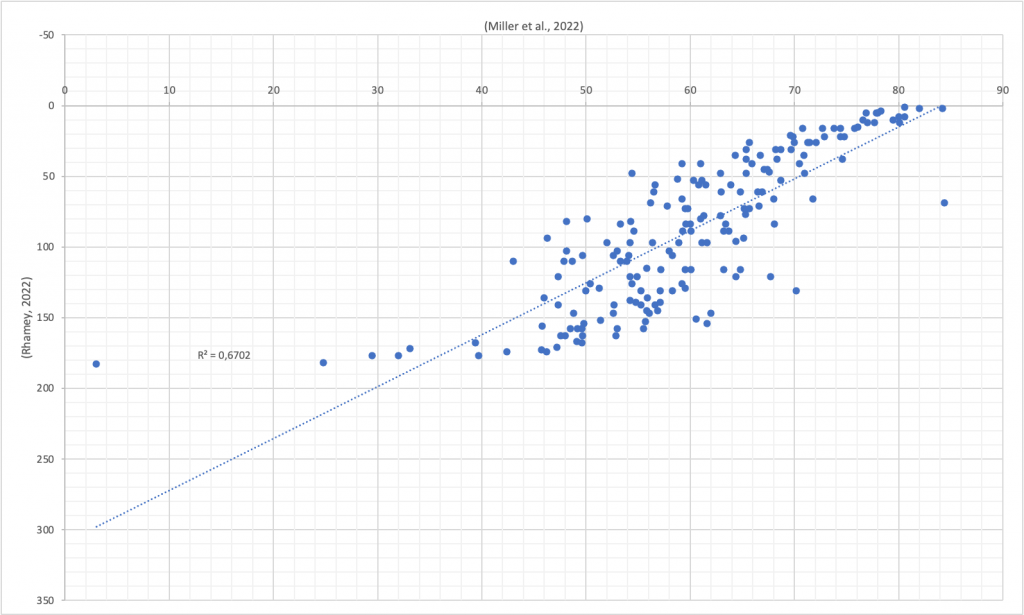
Graph 4. The correlation between Index of Economic Freedom (2022) and State of World Liberty Index (2022)
The Linear Model
Proposition
As it can be seen from the previous correlations, a linear regression between economic and socio-political freedom exists. Taking this line as a data to back it, this paper proposes a linear model which has an abstract country/territory/system in which every relationship is voluntary (a voluntaryist/voluntarist country/territory/system or 100% private law) on its one hand and another in which every relationship is determined by the political authority (a totalitarian country/territory/system or 100% public law) on the other. A visual representation of the model can be seen below.

Diagram 1. The Linear Model
Possible Inferences
From the available data, it is reasonable to conclude that from the relative positions of different countries/territories/systems the differences between the general freedom people living under them experience can be inferred. The correlations shown before especially support this idea for economic and social liberties. One caveat would be that which other correlation studies also share: one country might be different than the other in the unexpected direction because political and legal systems are complex and encompass many fields of their own. Knowing that, the model is still intellectually enjoyable, showcasing the correlation between different freedoms and the difference between countries/territories/systems.
Comparison of Legal Systems
The Classification
The primary data source used for determining the main legal framework of countries are from The World Factbook published by the Central Intelligence Agency of the United States (“Legal system,” 2021). When in doubt, Juriglobe’s respective list was also consulted (“Alphabetical Index of the Political Entities and Corresponding Legal Systems,” n.d.). For countries including customary law inside their systems among others, the customary legal system was ignored. As those laws are based on customs which can change from one country to the other (Black et al., 2007), such a classification would be faulty.
The descriptive data below are obtained through having an arithmetic mean of the four indexes that were used in calculating the correlations between economic and political liberty. Every index was weighted equally and for countries that don’t have any available data in some indexes, the arithmetic mean of the indexes available were used. For (Rhamey, 2022) the formula used to convert it from a ranking to a base 1 numeric data is $\frac{184-\text{rank}}{183}$ as there were 183 ranking spots. This calculation is referred to as the freedom score of a given country in this paper from thereafter.
Statistical Data and Boxplots
| Legal System | Lower Limit | 1st Quartile | Median | 3rd Quartile | Upper Limit |
| Civil Law (CL) | 0,01773224 | 0,504546448 | 0,620840849 | 0,748453552 | 0,89188388 |
| Common Law (CN) | 0,481357923 | 0,5884375 | 0,678360627 | 0,764348702 | 0,86763388 |
| Civil and Common Law Mixed (CC) | 0,342393443 | 0,560592896 | 0,632790582 | 0,699782787 | 0,794061475 |
| Islamic Law and Islamic Mixed (IC) | 0,217625683 | 0,367354508 | 0,467469954 | 0,565760587 | 0,660112022 |
Table 1. Statistical Data for Legal Systems
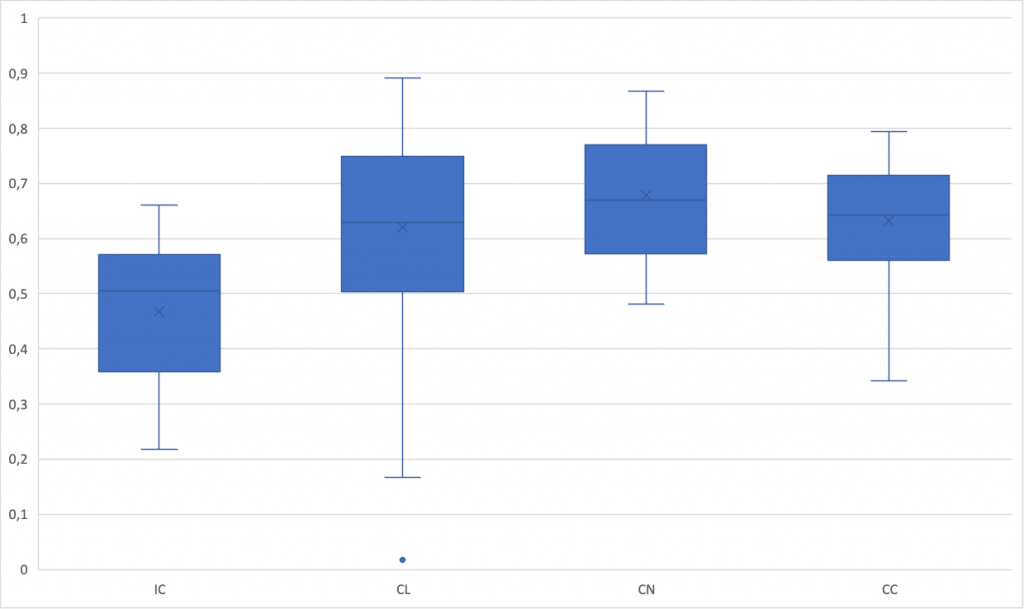
Graph 5. Boxplots for Legal Systems
Afterthoughts
Even though the mean and median freedom score for common law, a system which prioritises private legal agreements in general (“Key Features of Common Law or Civil Law Systems”), is the highest among the four, the difference seems to be insignificant. Similarly, the median freedom score for countries with a mixed civil and common law system is found to be higher than that for the civil law countries, the difference proves to be even more insignificant.
What is of significance is that the range of freedom score regarding civil law systems is far wider than it is for other systems. Civil law countries include both the highest and lowest scoring countries inside. The data above shows the same conclusion for the interquartile range of civil law countries. In addition, the data more significantly shows that countries with secular-western systems of law as their main framework are on average freer than those which have religious-Islamic law incorporated into their systems.
It must be noted that the lack of some indexes for some countries and a similar lack of raw scoring regarding the (Rhamey, 2022) ranking might affect the accuracy of this part of the study. However, the general ranking of the mean base 1 of the indexes is consistent with the general ranking of other indexes individually.
Summary
From the indexes available at this study, it can be seen that economic and social liberties can be accounted for by a linear model. Similarly, by the definitions given in this paper of public law, private law, voluntaryism/voluntarism and totalitarianism, it can be seen that these figures are philosophically idealised as being contrary to each other. Thus, inferring from the correlations and the definitions, a linear model which can be used in speculating the relative freedom levels of different countries/territories/systems have been defined. Using the approach that was applied in generating the model, a comparative study of four major legal systems were carried out. The results showed a ranking of median freedom scores between western systems with no to small significance. However, other findings such as the range of each system and the difference between secular-western and religious-Islamic systems were noted.
Cited Works
Law, J. (Ed.). (2015). Public law. Oxford Reference. Retrieved February 5, 2023, from https://www.oxfordreference.com/display/10.1093/acref/9780199664924.001.0001/acref-9780199664924-e-3146?rskey=QILAxr&result=3400
Law, J. (Ed.). (2015). Private law. Oxford Reference. Retrieved February 5, 2023, from https://www.oxfordreference.com/display/10.1093/acref/9780199664924.001.0001/acref-9780199664924-e-3032?rskey=hSpjtW&result=3288
Dicey, A. V. (1917). Lectures on the Relation between Law and Public Opinion (LF ed.). Liberty Fund.
Hoppe, H.-H. (2018). Democracy – The God That Failed: The Economics and Politics of Monarchy, Democracy and Natural Order. Routledge.
The Common Law and Civil Law Traditions. Berkeley Law. (2017, November). Retrieved February 6, 2023, from https://www.law.berkeley.edu/wp-content/uploads/2017/11/CommonLawCivilLawTraditions.pdf
Riches, C. (2021). Totalitarianism. In Dictionary of Contemporary World History, Oxford University Press.
Britannica, T. Editors of Encyclopaedia (2022, August 22). totalitarianism. Encyclopedia Britannica. Retrieved February 6, 2023, from https://www.britannica.com/topic/totalitarianism
Herbert, A. (1885). The Right and Wrong of Compulsion by the State and Other Essays (1978 ed.). Liberty Fund.
Dillon, M. (2010). Talcott Parsons and Robert Merton. In Introduction to Sociological Theory: Theorists, Concepts, and Their Applicability to the Twenty-first Century. essay, Wiley-Blackwell.
Gwartney, J., Lawson, R. A., Hall, J. C., Murphy, R., Djankov, S., & McMahon, F. (2022, September 14). Economic Freedom of the World: 2022 Annual Report. Fraser Institute. Retrieved February 17, 2023, from https://www.fraserinstitute.org/studies/economic-freedom-of-the-world-2022-annual-report
Miller, T., Kim, A. B., & Roberts, J. M. (2022). 2022 Index of Economic Freedom. Index of Economic Freedom: Promoting Economic Opportunity and Prosperity by Country. Retrieved February 17, 2023, from https://www.heritage.org/index
Vásquez, I., McMahon, F., Murphy, R., & Schneider, G. S. (2022). Human Freedom Index: 2022. Cato.org. Retrieved February 17, 2023, from https://www.cato.org/human-freedom-index/2022
Rhamey, J. P. (2022, May 28). 2022 State of World Liberty Index. J. Patrick Rhamey Jr. Retrieved February 17, 2023, from https://patrickrhamey.com/saturday-research/2022/5/28/2022-state-of-world-liberty-index
Central Intelligence Agency. (2021). Legal system. The World Factbook. Retrieved February 20, 2023, from https://www.cia.gov/the-world-factbook/field/legal-system/
Alphabetical Index of the Political Entities and Corresponding Legal Systems. Juriglobe. (n.d.). Retrieved February 20, 2023, from http://www.juriglobe.ca/eng/sys-juri/index-alpha.php
Black, H. C., & Garner, B. A. (2007). customary law. In Black’s Law Dictionary, West Group.
World Bank. (n.d.). Key Features of Common Law or Civil Law Systems. Public-Private-Partnership Legal Resource Center. Retrieved February 25, 2023, from https://ppp.worldbank.org/public-private-partnership/legislation-regulation/framework-assessment/legal-systems/common-vs-civil-law
